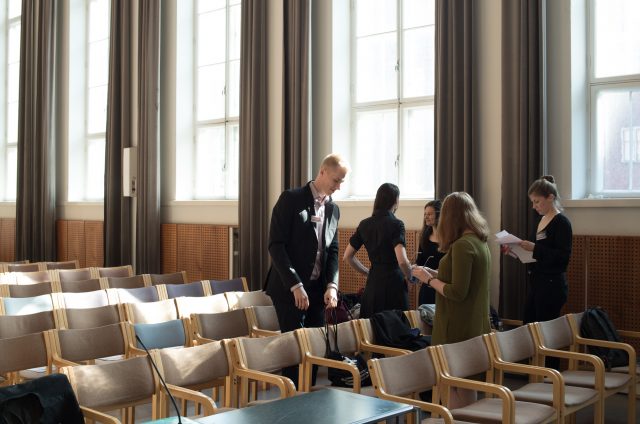This blog post reports on final presentation and outcomes of the DfG course. The post is written by members from two teams working with the Ministry of Environment’s brief on reducing electronic waste; Anna Pyyluoma from Aalto ARTS Collaborative and Industrial Design, Suvi Kinnarinen from Aalto ARTS Creative Sustainability, and Riikka Ylitalo from Aalto Biz, Marketing.
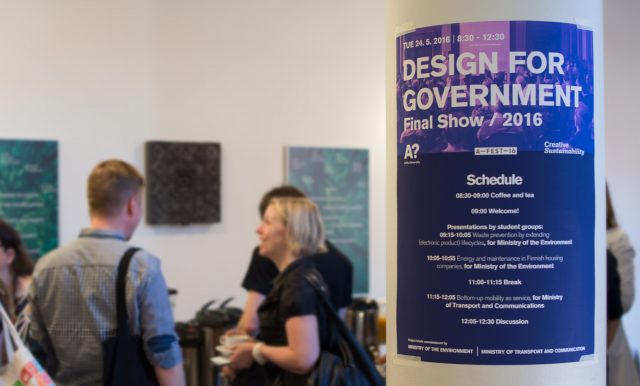
Final Show
Our Design for Government course concluded with the Final Show about a month ago – since then we and all the teams have still been working hard to finalize our final reports. We had a blast giving our presentations at the Final Show! We were happy to know from all the great feedback that all our hard work was considered valid and important and our ideas interesting.
To recap the Final Show, here are some short descriptions of the student proposals in order of presentation.
Proposals for the Ministry of Environment were presented during the first half of the Final Show. First, the ministry project brief concerning electronic waste and lengthening the life cycles of electronic devices was addressed from two directions.
The strategic approach of one team’s proposed ‘National Upkeep Plan‘ provided tools for the ministry to raise upkeeping and maintenance as the focus of waste policy and the coming national waste plan. The team proposed a new paradigm for talking about waste and waste management as well as practical solutions for changing the current paradigm towards a new topic and form of discussion.
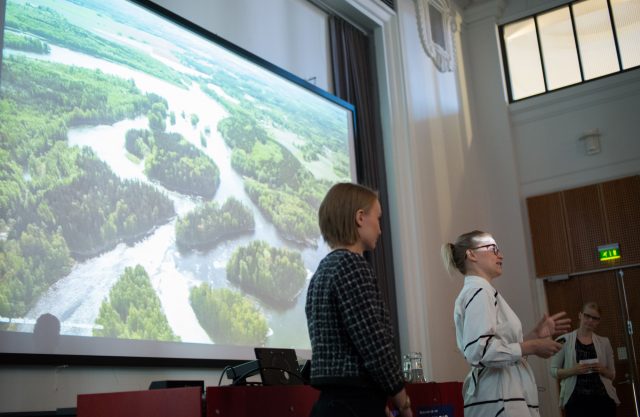
The team proposing a ‘National Procurement Agency’ tackled the issue of e-waste in terms of the efficiency of purchasing electronic devices through procurement processes in the public sector, which includes roughly one fifth of all electronic devices purchased in Finland. The team proposed a program that enhances peer-to-peer learning and supports procurers through practical tools. A national procurement agency is suggested to facilitate the continuous development of the program.
Then, two teams addressed the Ministry of Environment project brief about energy and maintenance in housing companies.
One team proposed ‘Pitäjä’ from the owner’s and buyer’s perspective and the second team proposed ‘My Plan’ from the housing company’s perspective. Pitäjä is an engine for motivating housing companies towards better upkeep of their buildings. By keeping the online timeline Pitäjä updated of past and future renovations, the housing companies maintain a good image and encourage others to join them in the good company of housing companies that provide timely and relevant information for the stakeholders.
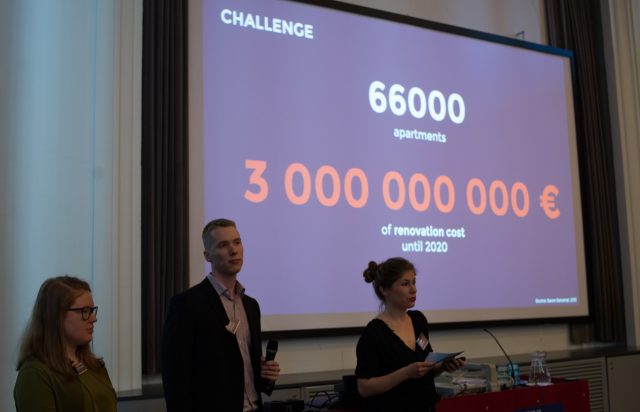
My Plan is a simple website for owners, providing understandable, bite-sized information about renovations, how to plan for it and, especially, how to plan it in time. The tool applies in the fields which cause overwhelming feelings and a trusting attitude of owners. The team’s goal is transforming apartment owners from trusters into active shareholders with informed opinions and decisions.
The second half of the Final Show gave perspectives of the future of rural mobility through addressing the Ministry of Transport and Communication‘s project brief about ‘mobility as a service’.
The first team, ‘VERKA Mobility Canvas’, proposed a digital map tool that makes the mobility needs of citizens visible in planning public transport in order to re-imagine public transport. The second group, ‘Liike’, proposed a program to accelerate bottom-up transport innovation in rural Finland. Liike is proposed as a program run by the ministry to work with rural communities on a local level, enabling new transportation solutions and new opportunities for citizen involvement. It connects citizens to decision-makers and creates a new culture of participation in rural mobility.
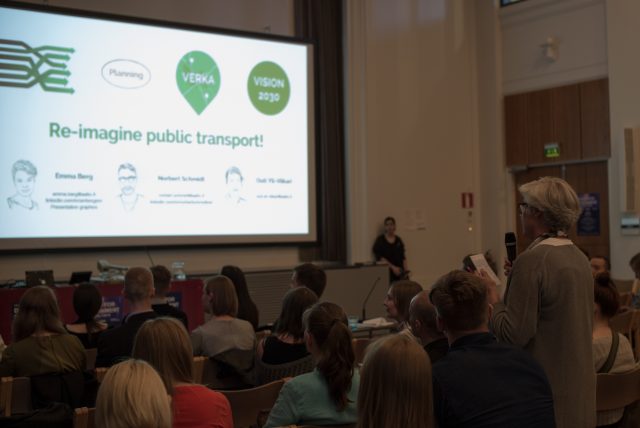
Great feedback and discussion at the Final Show!
Feedback to the student teams’ proposals was enthusiastic during the Final Show. Representatives of the ministries seemed eager to utilize the ideas in practise and ready to get them started up in real life. Some of the presentations were even going slightly viral on Twitter! Often in these types of school projects, there is a tendency that all the hard work culminates into a polished concept, but does not get deployed into practice in real life. However, these type of ideas are bringing new insight to the problem and allowing new perspectives to the issue, which in the case of almost wicked problems can lead to crucial solutions in the future. And sometimes they help in verifying the path that the client has already considered but has yet to take.

During discussions at the Final Show, the representatives of the ministries and Prime Minister’s Office expressed interest in learning about design and design thinking methods. So maybe in the future the Design for Government could implement more thorough collaboration with the ministries in the projects! We hope that students could work more closely with the representatives of these ministries and learn about politics of these wicked problems as well as political work in the public sector. At the same time, this would allow the client to have a deeper ownership of the project and learn about design and design tools in practice.
All in all, this course has brought together people from various backgrounds to work together in solving some of the most pressing issues of our time, including some of those really challenging wicked problems. This has also shown that solving public issues can be as fascinating as any other design challenges are – or even more interesting, since we truly got to think on how to influence people and truly make an impact!
So if you are a student considering taking this course, do not hesitate to apply for 2017 Design for Government course!
